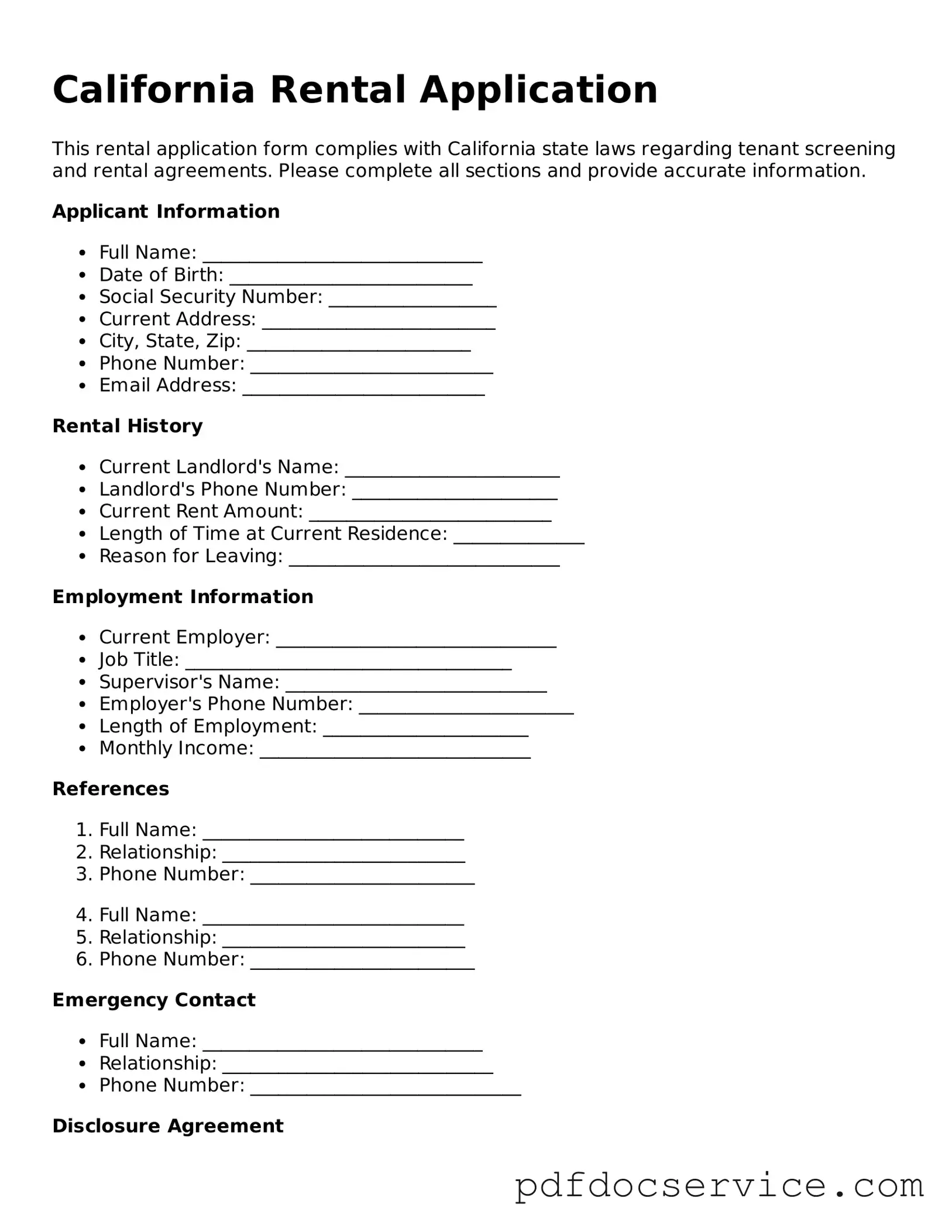The California Rental Application form is a document used by landlords to gather information about potential tenants. It typically includes sections for personal information, rental history, employment details, and references. This form helps landlords assess whether an applicant is a suitable candidate for renting their property.
Who needs to fill out a Rental Application?
Anyone interested in renting a property in California must fill out a Rental Application. This includes individuals, couples, or groups seeking to lease an apartment, house, or other types of rental properties. Each adult who will reside in the rental unit usually needs to submit a separate application.
A standard California Rental Application may ask for the following information:
-
Full name and contact information
-
Social Security number or other identification
-
Employment history and income details
-
Rental history, including previous addresses and landlord contacts
-
Personal references
-
Consent for background and credit checks
Can landlords charge an application fee?
Yes, landlords in California can charge an application fee. However, this fee must be reasonable and cannot exceed the actual cost of screening the applicant. As of recent regulations, the maximum fee is typically capped at around $50. It's important for landlords to disclose the fee amount upfront and provide a receipt.
What happens after I submit my application?
After submitting your application, the landlord will review the information provided. They may conduct background checks, verify employment, and contact references. This process can take anywhere from a few days to a week, depending on the landlord's procedures and the volume of applications received.
What if my application is denied?
If your application is denied, the landlord is required to inform you of the decision and provide a reason. Under the Fair Credit Reporting Act, if the denial is based on information from a credit report, you have the right to request a copy of that report. Understanding the reason for denial can help you address any issues in future applications.
Is it possible to appeal a denial?
While there is no formal appeal process, you can communicate with the landlord to understand their concerns. If there was a misunderstanding or incorrect information, providing additional documentation may help clarify your situation. However, the final decision rests with the landlord.
Are there any protections for applicants under California law?
Yes, California law provides several protections for rental applicants. For instance, landlords cannot discriminate based on race, color, religion, sex, national origin, familial status, or disability. Additionally, they must follow specific procedures when conducting background checks and must inform applicants of their rights regarding credit reports.
How can I improve my chances of being approved?
To enhance your chances of approval, consider the following tips:
-
Provide accurate and complete information on your application.
-
Include references who can vouch for your reliability as a tenant.
-
Be prepared to show proof of income, such as pay stubs or bank statements.
-
Maintain a positive rental history by addressing any past issues with previous landlords.
-
Consider offering a larger security deposit if you have concerns about your credit history.
Can I withdraw my application once submitted?
Yes, you can withdraw your application at any time before the lease is signed. However, it's courteous to inform the landlord of your decision as soon as possible. Keep in mind that if you withdraw after paying an application fee, the landlord may not be obligated to refund it, depending on their policy.
